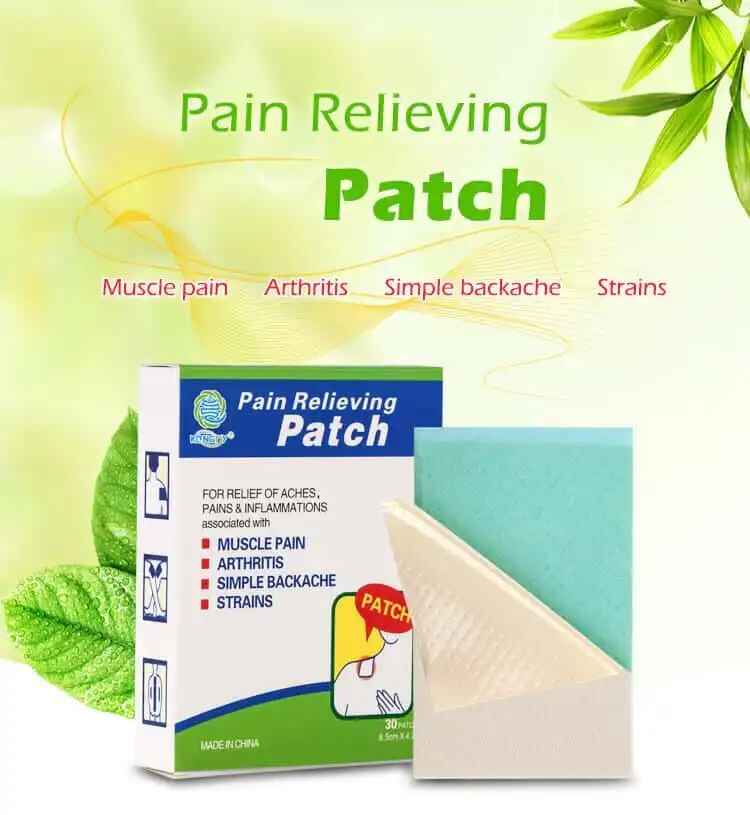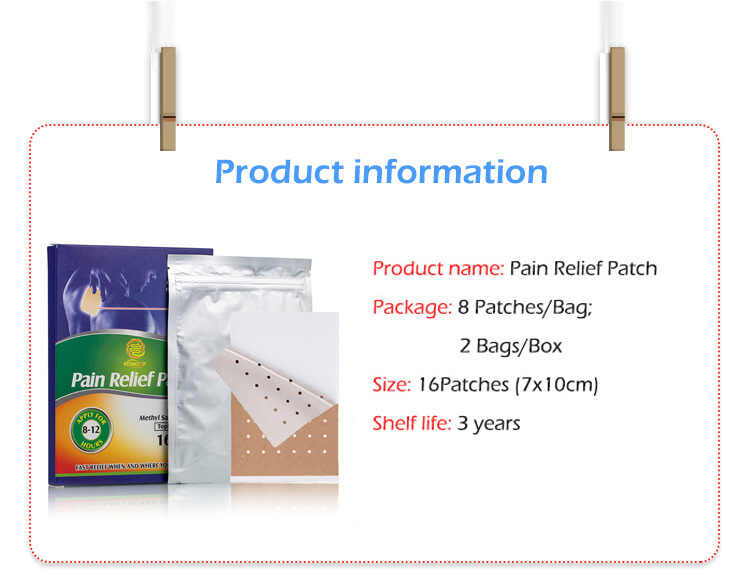Choosing the Right Herbal Ingredients for B2B Clients' Pain Relief Needs
When it comes to offering effective and natural pain relief products, herbal pain patches are gaining significant traction in the health and wellness market. These patches leverage the power of plant-based ingredients to provide targeted pain relief without the side effects often associated with pharmaceutical options. For B2B clients, the ability to select and customize herbal ingredients that align with specific pain relief needs is a key component of developing a successful product line.
Whether you're looking to develop custom herbal pain patches or private label herbal pain patches, choosing the right ingredients is essential for both efficacy and customer satisfaction. In this article, we'll explore how businesses can choose the best herbal ingredients for their pain relief products, the role of Herbal Pain Patches Manufacturers and Herbal Pain Patches OEM suppliers in ingredient sourcing, and how to tailor formulations for various pain relief needs.

1. Understanding the Key Types of Pain
Before diving into ingredient selection, it's important to understand the different types of pain that herbal pain patches are designed to address. Pain can be broadly classified into the following categories:
Acute Pain
Acute pain is usually a result of injury or trauma, such as muscle strains, sprains, or cuts. It is typically temporary but can be intense. Herbal pain patches designed for acute pain often contain ingredients that provide immediate soothing relief.
Chronic Pain
Chronic pain persists over time and may result from conditions like arthritis, back pain, or fibromyalgia. These types of pain require long-lasting relief and may benefit from herbs that help with inflammation and muscle relaxation.
Inflammatory Pain
Inflammatory pain arises from conditions like rheumatoid arthritis or tendonitis. Reducing inflammation is key in these cases, which is why herbs known for their anti-inflammatory properties are commonly included in custom herbal pain patches for inflammatory pain relief.
Neuropathic Pain
Neuropathic pain is caused by nerve damage or dysfunction, often leading to burning or shooting pain. Herbal pain patches for neuropathic pain might include ingredients that soothe nerve irritation and support nerve regeneration.
Each type of pain requires a specific combination of ingredients to provide the most effective relief.
2. Common Herbal Ingredients in Pain Relief Patches
Selecting the right herbal ingredients is essential for achieving optimal pain relief. Below are some of the most commonly used herbs in Herbal Pain Patches formulations:
1. Menthol
Menthol is one of the most popular ingredients in Herbal Pain Patches. Known for its cooling effect, it provides instant relief by numbing the area and alleviating discomfort. Menthol is particularly effective for muscle soreness and joint pain, making it a staple in many pain relief patches. It also enhances the absorption of other active ingredients, making it ideal for Herbal Pain Patches OEM formulations.
2. Arnica
Arnica is widely known for its ability to reduce inflammation and bruising, making it ideal for treating sprains, strains, and sore muscles. It contains compounds that help reduce swelling and promote faster recovery. As a Herbal Pain Patches Manufacturer, using arnica in private label herbal pain patches is a great option for clients targeting inflammatory pain relief.
3. Eucalyptus
Eucalyptus has anti-inflammatory and analgesic properties, which can help relieve pain and swelling associated with joint pain and muscle aches. It is commonly used in custom herbal pain patches due to its ability to open up the pores and allow other ingredients to penetrate deeper into the skin.
4. Camphor
Camphor provides a warming sensation that can help soothe aching muscles and joints. It increases circulation in the affected area and has a calming effect on the nervous system. Many Herbal Pain Patches Suppliers use camphor in formulations intended for chronic pain or muscle soreness.
5. Turmeric (Curcumin)
Turmeric contains curcumin, a compound known for its powerful anti-inflammatory properties. It is commonly used in Herbal Pain Patches designed for conditions like arthritis or tendonitis. Curcumin has been shown to reduce pain by inhibiting inflammatory molecules, making it an excellent addition to private label herbal pain patches aimed at long-term relief.
6. Ginger
Ginger has been used for centuries as a natural remedy for pain and inflammation. It has antioxidant and anti-inflammatory properties, making it an excellent ingredient for custom herbal pain patches targeting joint pain and muscle stiffness.
7. Capsaicin
Capsaicin, derived from chili peppers, works by depleting substance P, a neurotransmitter that sends pain signals to the brain. It is particularly effective for neuropathic pain, such as in conditions like shingles or diabetic nerve pain. Herbal Pain Patches OEM formulations often incorporate capsaicin for its ability to provide long-lasting relief.
8. Willow Bark
Willow bark contains salicin, a compound that is chemically similar to aspirin. It has been shown to reduce pain and inflammation effectively. Many Herbal Pain Patches Manufacturers use willow bark for its natural analgesic properties, especially in patches designed for chronic pain.
3. How to Choose the Right Ingredients for Your Target Audience
Choosing the right herbal ingredients for your B2B clients involves understanding their specific pain relief needs and goals. Here are some key considerations when selecting ingredients for Herbal Pain Patches:
Target Audience's Pain Type
As discussed earlier, understanding whether your product will address acute pain, chronic pain, inflammatory pain, or neuropathic pain is critical to ingredient selection. For instance, if your client is targeting joint pain, turmeric and willow bark would be more appropriate, while menthol and eucalyptus would be suitable for muscle pain.
Product Purpose and Brand Positioning
Different B2B clients may have different brand philosophies. Some may focus on all-natural, organic products, while others may prioritize rapid relief or long-lasting benefits. If a brand focuses on sustainability, they might opt for ingredients that are ethically sourced and eco-friendly.
Ingredient Synergy
Certain herbs work better in combination than others. For example, menthol and camphor work synergistically to provide both cooling and warming effects, which can enhance the overall pain-relieving experience. Turmeric and ginger often complement each other in reducing inflammation. As a Herbal Pain Patches Supplier, offering synergistic herbal combinations is crucial for developing effective and unique formulations.
Allergy Considerations
When creating private label herbal pain patches, it’s important to be aware of potential allergens. Herbs like arnica and eucalyptus may cause skin irritation in sensitive individuals. Testing for skin compatibility is essential, and businesses should offer clear labeling about ingredients that may cause allergic reactions.
4. Sourcing High-Quality Herbal Ingredients
The quality of the herbal ingredients used in Herbal Pain Patches plays a major role in the overall effectiveness of the product. As a Herbal Pain Patches Manufacturer or OEM, sourcing high-quality ingredients is a top priority. Working with reputable suppliers and ensuring that the herbs are ethically sourced, organic, and free from contaminants is critical for maintaining product integrity.
Some key factors to consider when sourcing herbal ingredients include:
Purity: Ensure the ingredients are free from pesticides, heavy metals, and other contaminants.
Sustainability: Opt for organic or sustainably farmed ingredients, which can appeal to eco-conscious consumers.
Supply Chain Transparency: Work with suppliers who provide clear information about their sourcing practices, from farm to factory.
5. Partnering with the Right Herbal Pain Patches OEM Supplier
For B2B clients looking to create custom herbal pain patches, partnering with an experienced Herbal Pain Patches OEM supplier is essential. A reliable supplier will offer:
Expertise in formulating herbal pain patches with the right ingredients.
Access to a wide range of high-quality herbs.
Assistance in creating unique, branded products that meet regulatory standards.
By partnering with a trusted Herbal Pain Patches Supplier, businesses can ensure that their products are both effective and aligned with their brand values.
Conclusion
Choosing the right herbal ingredients for pain relief patches is a critical step in developing effective and competitive custom herbal pain patches. By understanding the pain types, aligning the right herbs with the product’s purpose, and sourcing high-quality ingredients, B2B clients can create pain relief products that stand out in the market. Working with experienced Herbal Pain Patches Manufacturers and OEM suppliers ensures that the final product delivers both customer satisfaction and long-term brand success.
Related Questions and Answers:
1. How do I choose the right herbs for my pain relief patches?
Start by understanding the type of pain your product will address, then select herbs with proven efficacy for that specific pain type. Combine ingredients that complement each other for optimal effectiveness.
2. What are the most popular herbal ingredients used in pain relief patches?
Common herbs include menthol, arnica, eucalyptus, turmeric, ginger, and capsaicin. These herbs are known for their pain-relieving, anti-inflammatory, and soothing properties.
3. Can herbal pain patches work for chronic pain relief?
Yes, ingredients like turmeric, willow bark, and ginger are often used in custom herbal pain patches to help alleviate chronic pain, especially when combined in effective formulations.
4. Are there any allergens I need to watch out for in herbal pain patches?
Certain ingredients like arnica and eucalyptus may cause skin irritation or allergic reactions in sensitive individuals. Be sure to conduct skin compatibility testing and clearly label products.
5. How do I ensure my herbal pain patches are of high quality?
Work with reputable Herbal Pain Patches Manufacturers and suppliers who offer organic, sustainably sourced ingredients and maintain high standards of purity and safety.






